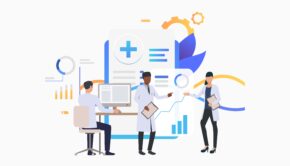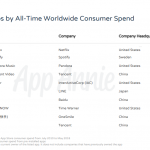Transforming Healthcare with Predictive Analytics
As the healthcare industry is moving towards making the complete operations more digitized and advanced, the healthcare data and providers are developing capabilities to make a move from typical analytics to more advanced. They are taking strides in the direction of predictive analytics to provide and improve personalized healthcare. Unlike providing analytics on just historical data, predictive analytics provides potential futuristic insights based on historical data and can also take into account other dynamic factors as well. This is an important development for personalized health organizations. Professionals like doctors, healthcare administrators, financial analysts can find potential future outcomes before the events actually take place and make a futuristic strategy to excel and stay a step ahead of the competition.
Significance of predictive healthcare analytics
The application of predictive healthcare analytics is significant to patient care where the result is associated with quick and right decisions taken by the healthcare providers in case of a critical situation. This can be easily understood in case of emergency and intensive care and surgery. In these cases, to utilize the insights it takes an experienced team of providers, however, its application is far-reaching than this one. Below are the few examples of how healthcare providers are using predictive analytics to derive actionable futuristic insights and providing enhanced services to the patients and improving the day to day operations.

Population Health Management
Predictive analytics holds importance in population health management as using it can help in the prevention of diseases. With predictive analytics, people at higher risk of contracting a chronic disease can be identified. It can help in avoiding costly and difficult treatments later. Machine learning can also help healthcare organizations understand who will require personalized care and wellness programs. People can be risk scored based on demographic factors like age, gender, etc, health conditions, and historic health data.
Risk Management
Predictive analytics can help in risk management and providing value-based care. Healthcare organizations can identify patients with a high risk of various health conditions and can be treated with medications. This will help in improving care quality and reducing costs.
Healthcare organizations can also use predictive modeling to know if patients are prone to infections and health deterioration while still in hospital and help providers make quick and right decisions to avoid such situations.
Avoiding Readmissions
Healthcare organizations can utilize predictive analytics to recognize patients with high probability and characteristics of readmission within the next 30 days. This will help providers to take the right actions to avoid readmissions, do follow-ups, and design personalized healthcare programs. The healthcare providers are at times may also get subjected to penalties due to readmission. This also adds another incentive for providers to prevent these readmissions.
Resource Allocation
Hospitals tend to incur losses in case of gaps in appointments and disturbs resource distribution. It negatively affects the organization finances and disrupts physician’s schedule and workflow.With predictive analytics patients most likely to miss the appointment can be identified and providers can take appropriate actions like sending frequent reminders, offering transport, and providing other services. This will also enable organizations to improve customer satisfaction, reduce revenue losses and increase healthcare accessibility.
Behavior Analysis
Healthcare providers can use predictive insights to understand and predict patient behavior. Understanding consumer behavior is even more important for healthcare organizations as well as insurance companies to minimize long term costs, enhance patient care, and make other strategies accordingly. This will help in writing tailored messages, finding effective ways to design personalized health plans, and developing the right communication and compliance strategies.
Conclusion
These are just a few examples of how machine learning and predictive analytics is helping reduce the risk of chronic diseases, improve population healthcare, and provide better patient care. As technology moves ahead these applications will have far better reach than now and newer and better utilization will come up to improve the whole operations and provide a seamless experience to the patients. In order to utilize predictive analytics completely, the process should be both physician and analytics driven. For daily operations, analytics can certainly improve things by leaps and bounds. But, to use it effectively for patient care, learning to strike the right balance will be detrimental.










![The What, Why and How of WordPress Firewalls [Infographic]](https://technofaq.org/wp-content/uploads/2017/11/The-What-Why-and-How-of-WordPress-Firewalls-150x150.png)





